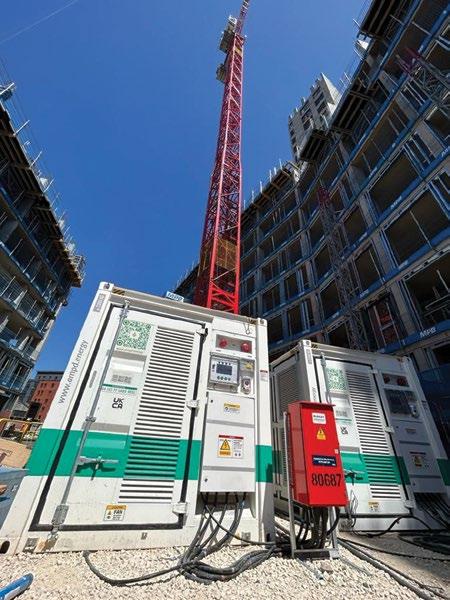
14 minute read
Packed with Power
Packed with Power
In its simplest form, a battery is a container that stores energy until it is needed. In this article we take a look at the latest developments from the traditional batteries to the growing market for large solar/hydrogen powered hybrid and full electric power packs capable of powering large construction sites.

Most of us have grown up with the small dry cell batteries that were or were ‘not included’ with children’s toys, the built-in battery packs in mobile phones which always run low when you need them most, and starter batteries in cars that struggled on a cold winter’s day.
Those in the aerial lift rental business have been familiar with the lead acid wet batteries that power scissor lifts and booms, that in the early days struggled to complete a full days work, especially if it involved a bit of driving. However, the growth of mobile phones and Electric Vehicles has led to massive developments in battery and electric drive technology changing the way we look batteries. On top of this most countries now acknowledge the urgent need to limit global warming, all of which is seeing a seismic shift in attitude of users and manufacturers towards electric power.
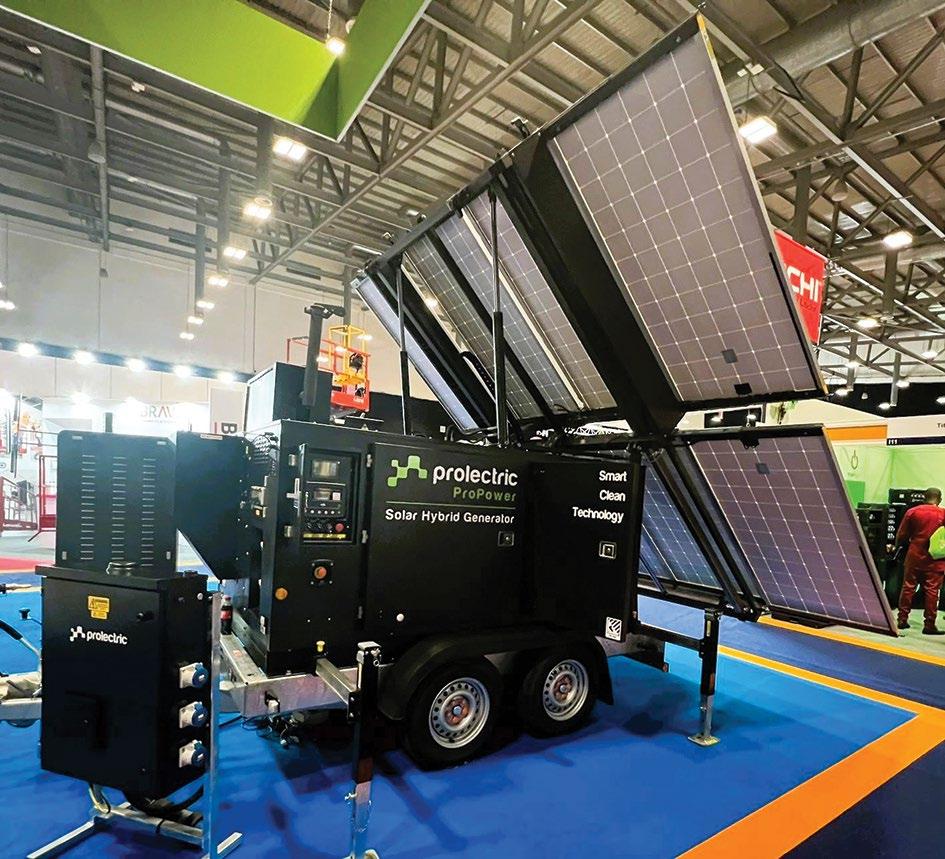
In spite of this the internal combustion engine will be with us for many years to come, increasingly using alternative fuels such as HVO diesel and hydrogen etc…This is particularly true given the current range and recharging times of mobile battery packs. The reality and science is that if you want more power, you need a bigger battery which causes issues with machine size and weight.
Having said all that technology advances are changing things rapidly. We already have all electric platforms, cranes and trucks, however as they become more widely used, the charging problem is passed on to already overstretched national electricity grids, which simply cannot cope.
One of the major trends at the moment is the growing use of large battery or hybrid power packs replacing diesel generators in major cities. These can be charged by off peak electric from the mains aided by solar panels, small wind turbines, or hybrid units with engine driven generators fuelled by HVO diesel or even hydrogen, a version of which has just been released and is available for rent or buy. (See below).
One example of an alternative to a diesel generator is the battery ‘generator’ - such as the AMPD Entertainer - which is an advanced, compact and connected battery energy storage system. The Entertainer uses more than 30,000 automotive grade battery cells designed into fire and explosion proof battery modules.
At the end of last year (C&A Vol 25 issue 6) we reported on the first phase of Sheffield’s £300 million West Bar project in the UK, being managed by contractor Bowmer + Kirkland which is using three shipping container size AMPD battery packs to power the entire site which included four hoists, 40 mastclimbers and two tower cranes. The site only needs a low amperage electricity feed from the grid to trickle charge the batteries overnight. This means that full mains power need not be installed on the site until after all the buildings have been completed. If the initial results are indicative of the savings, this method of powering job sites could prove to be one of the biggest game changers in construction in modern times.
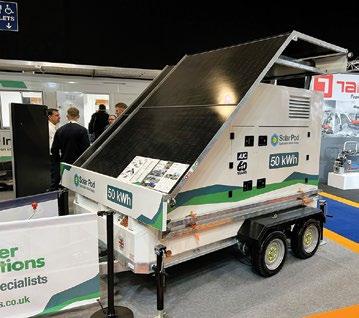
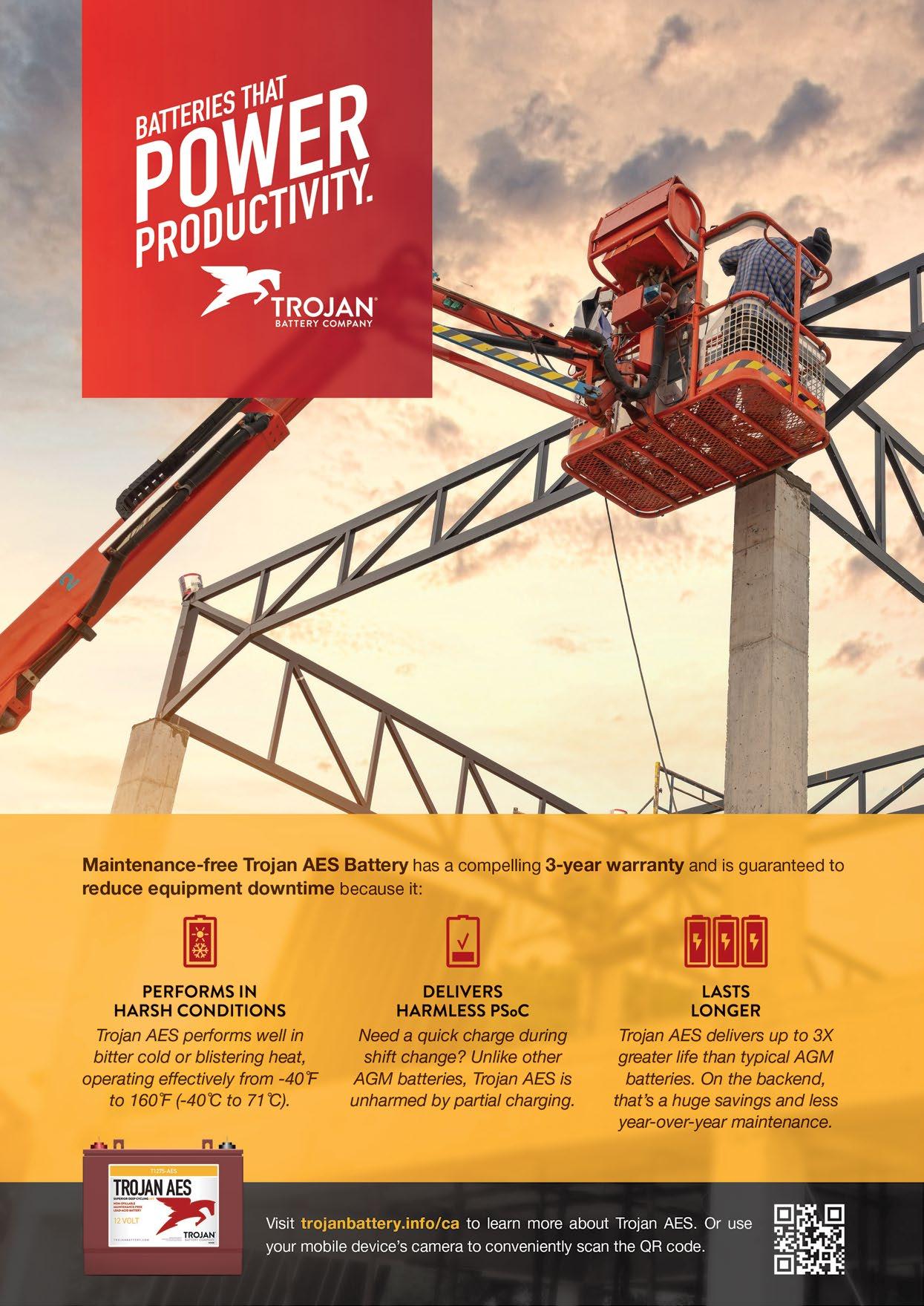
Cranes and acces equipment
When it comes to battery powered cranes and especially aerial work platforms - primarily small scissor lifts and industrial pick & carry cranes - they have been around for many years with the batteries powering a motor which drives the hydraulic pumps. The advent of lithium ion batteries, motor controls and AC drive wheel motors has led to vast improvements in ‘battery’ performance leading to the adoption of larger and larger battery powered machines. More recently all-electric - no hydraulics - machines using electric actuators in place of hydraulic cylinders eliminate pumps, hydraulic hoses and the risk of leaks.
Lithium ion changed everything
The drive to miniaturise everyday products such as the mobile phone and portable music players in the late 1980s and early 90s resulted in the biggest battery breakthrough yet - Lithium Ion. The power output for its size and weight was incredible and it first made an appearance in a small hand held Sony video camera in 1991. There were several attempts at using Lithium Ion batteries for the chassis of van mounted aerial platforms around 2007 or 2008, but it was not until 2009 that Lithium Ion batteries were used in the first production platform, the battery powered Hinowa Goldlift 14.70 spider lift. The machine was fitted with a 2,000W, 48V AC motor and Lithium Ion battery pack. At the time Lithium Ion batteries were very expensive compared to traditional lead acid or gel batteries, however the benefits included a 60 percent plus reduction in battery weight, three times the battery life and half the charging time, not to mention longer battery life and less maintenance. And despite a few issues very early on with batteries exploding, Lithium Ion is increasingly becoming the battery of choice 15 years on. Several manufacturers have produced calculations that show that, while maintenance free AGM or Lithium ion batteries are more expensive up front, they can actually prove to be a cost saver over time, given how long they last while eliminating most of the maintenance costs associated with wet batteries.

Hydrogen power generator
However, battery/engine development continues on many fronts including the use of hydrogen. Early February saw the first commercially available hydrogen internal combustion powered generator in the UK - the 45 kVA e-power E45made by Belgian generator specialists e-power, available for sale or hire from Southampton, UK based Commercial Fuel Solutions which specialises in the design, development and distribution of fuel storage and transfer systems.
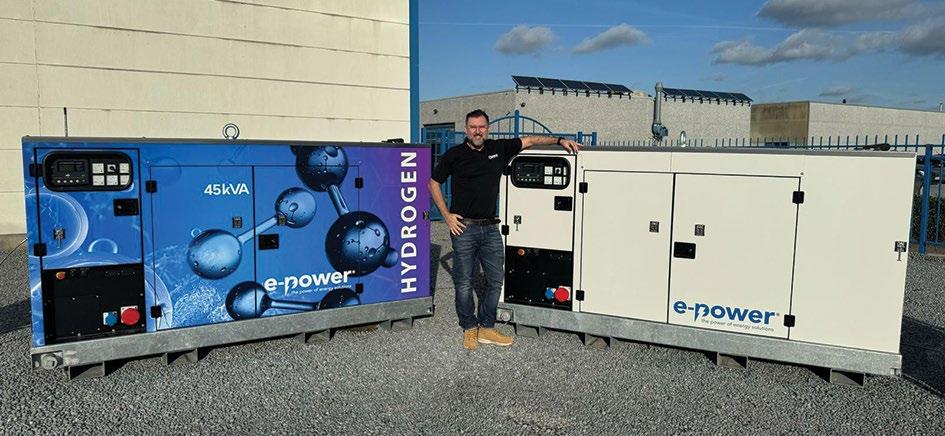
The E45 is ‘ground breaking’ in that it is designed to operate on any grade of hydrogen. According to chief executive Robin Futcher: “Using a hydrogen combustion engine offers a cost effective, ecofriendly solution for power generation. With its lower capital expenditure, ability to withstand fuel impurities and lower fuel expenses, it is the clear choice for businesses committed to investing in the future of hydrogen energy and making substantial strides in reducing their carbon footprint.”
In an effort to alleviate user concerns the company offers a comprehensive turnkey package, conducting thorough site safety risk assessments to ensure suitability, with risk assessments, zoning diagrams and compliance checks. Specially trained technicians manage the installation and commissioning of the generator while providing necessary training, permits and safe operation oversight. It can also supply the hydrogen required, with remote fuel consumption monitoring.
“The H2ICE generator utilises hydrogen combustion to produce dependable electrical power, and an emissions free alternative to fossil fuel generators,” says Futcher. “This method not only ensures minimal emissions but also capitalises on the cost efficiencies of hydrogen. And unlike fuel cell based hydrogen the H2ICE generator is less vulnerable to impurities in the hydrogen supply.”

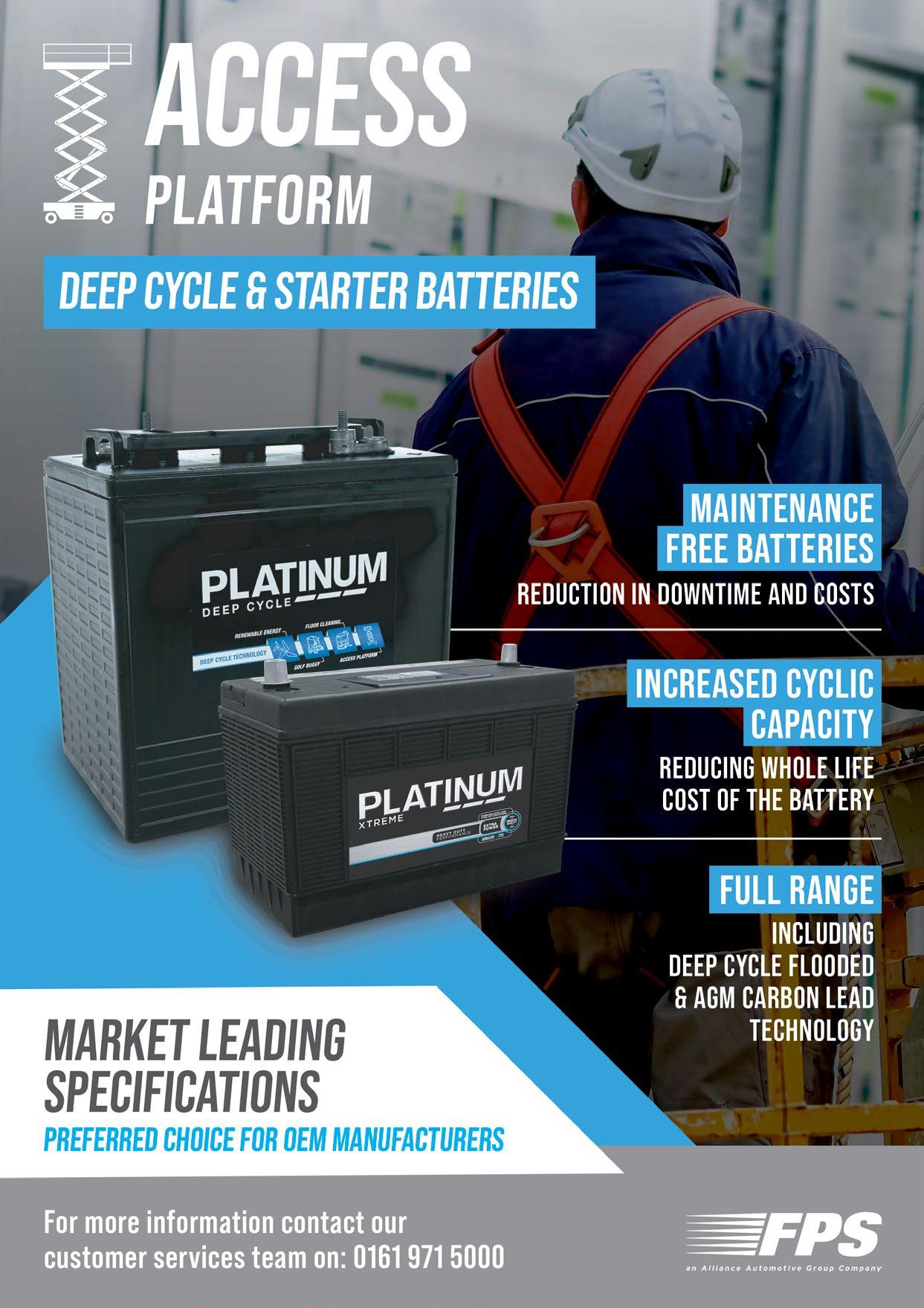
The market is turning
If you needed any confirmation of the change, the UK’s Executive Hire Show saw a raft of exhibitors showing ‘environmental’ power packs/generators, most of which would not have been seen just a year or two ago.
One company showing off a new battery power system was American company Powr2. Formed in 2018 the company has three main products -the Probank Pro and XPro and the Probank Max. Despite being all battery powered, they can, depending on the required demand, be used with a diesel generator to create a hybrid power system.
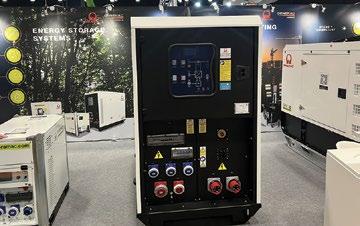
In one application an environmentally conscious contractor in the USA used a Powr2 hybrid power system - an HES-30.60 Powerbank Energy Storage System - alongside an existing 56kW diesel generator. By installing the Powerbank, the client was able to monitor its energy usage via the Powr2 online energy management portal
and saw the actual load pulled by the offices varied between 3kW and 6kW meaning the generator was grossly oversized for the job. Using load sensing technology, the Powerbank onboard Energy Control Module was able to automatically turn the generator off and run the office trailer on battery power for 20.7 hours out of the 24 hour period. This reduced refuelling from every two days to every seven days as well as reducing generator service intervals which went from every 10 days to every 60 days. Another benefit was the battery’s stored energy allowed the maintenance on the generator to take place without the office losing power. By implementing the hybrid power system, the contractor reduced generator run time by 86 percent, emissions were reduced by 74 percent and fuel usage was reduced by 74 percent. The contractor also saved significantly on down time and maintenance costs.
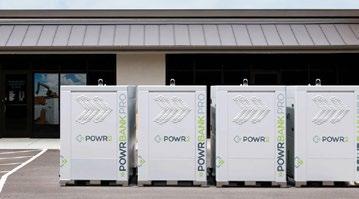
Easy savings of up to 40%
In addition, the mass market lead acid/AGM/ Lithium batteries are also constantly improving. In previous C&A features we have highlighted the benefits of the various type of new batteries that are entering the market looking to replace the traditional flooded lead acid batteries.
But how much might a user save by switching to a different type of battery? Canadian battery manufacturer Discover Battery has launched a new, free, Total Cost of Ownership calculator allowing users to understand and determine the operational costs of a particular battery type over its lifetime.
The calculator helps buyers make an informed decision by inputting specific data such as battery specification/type, battery cost, labour expenses and battery service frequency to determine the total operational costs over its lifetime. By selecting the best battery for the application, savings of up to 40 percent are said to easily be possible.
The long term financial benefit, particularly for rental businesses - which may run hundreds or even thousands of battery powered machines - is huge. In a price sensitive and competitive market, being able to compare the Total Cost of Ownership for various battery types, rather than the initial purchase cost is essential for calculating the overall profitability of each item of equipment.
According to Discover Battery, there are substantial cost savings when using Dry Cell AGM batteries, compared to traditional flooded lead acid batteries. Alexander Marotz said: “While the initial cost of Dry Cell AGM batteries is higher, their lifetime savings can range between 20 to 40 percent when compared to lead acid batteries. Every customer who has made the switch to AGM batteries will agree that the initial decision to change is difficult, however once they have used AGM batteries for any length of time, they love the benefits and do not want to go back to the old, flooded batteries.”
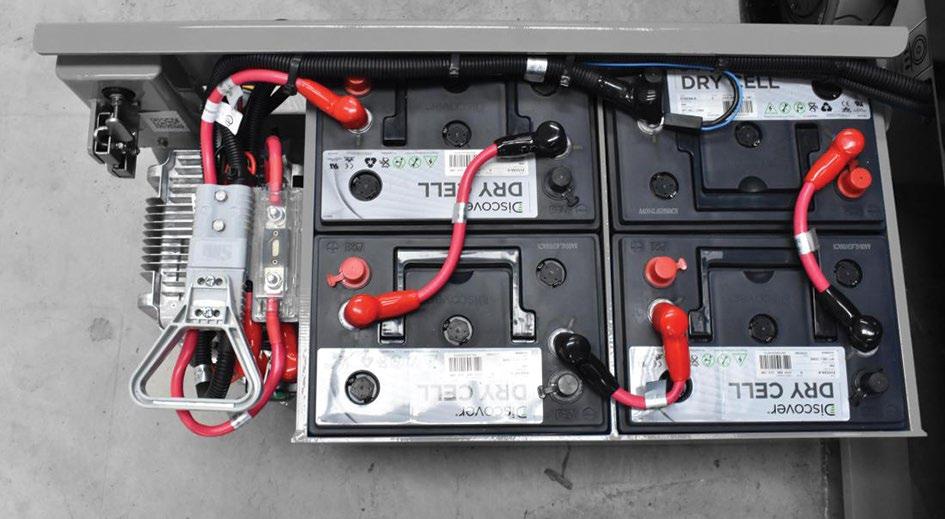
“Regular lead acid batteries are often seen as the most affordable solution however many users overlook the costs of maintaining this type of battery correctly which adds significantly to the total costs over their lifespan. Many hidden expenses contribute to the total cost of ownership apart from the obvious benefits of not having to regularly top up the water,” adds technical sales director Stefano Giuliani. “These include fewer equipment repairs caused by corrosion damage from acid spills, off gassing, and reduced machine downtime due to improper battery maintenance in the field.”
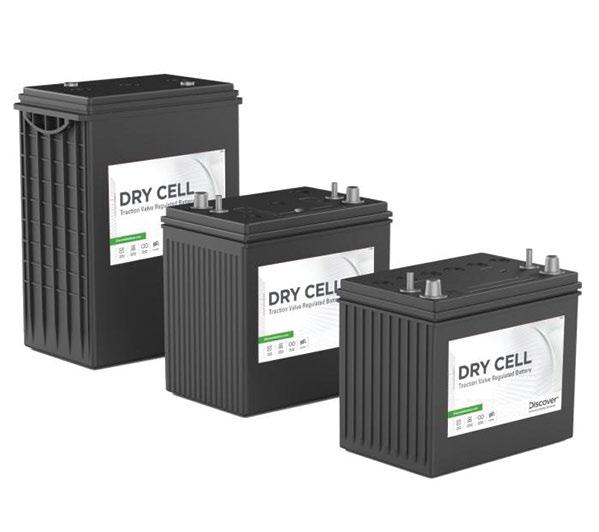
Using the total cost of ownership calculator:
Example 1 A single electric scissor lift
Using the calculator to calculate the real life cost savings the following assumptions have been made:
• Using 4 x 6Volt 190Ah batteries
• Dry Cell AGM 20% higher initial cost than premium flooded batteries
• 3 years battery life expectancy
Data for a typical user is input into the calculator such as the initial purchase price and monthly maintenance schedule per scissor lift. The calculator then gives the relative cost of the AGM battery compared to the flooded lead acid battery. In this example, the total lifetime cost of the AGM battery pack was 24 percent lower than a premium lead acid battery pack. And this calculation does not include the time spent on battery equalisation during charging, which would further impact the total ownership cost for flooded batteries.
Example 2: A fleet of 200 electric scissor lifts Scaling up the above example for a fleet of 200 electric scissor lifts… For simplicity, unexpected call-outs due to watering or unforeseen repairs due to acid spills with flooded batteries are not included. However, the impact of these can be simulated in detail with the calculator. Based on this scenario, the lifespan cost savings for the fleet would exceed €63,000 over the three years of operation.

Safety and reliability
UK based battery distributor Ecobat Battery raises the point that batteries used on aerial work platforms and similar equipment, need to be able to cope with current surges from drive and lift motors and cope with frequent deep dischargesin excess of 80 percent. It is also not uncommon for machines to be placed back in service before they are fully recharged, meaning they are often going out in a partial state of charge and are even more likely to go beyond the 80 percent discharge point, potentially reducing their lifespan.
As a result, choosing the correct replacement battery for a machine is more important than many realise. Ideally they need be able to accept ‘opportunity charging’, which can be a frequent occurrence on site, possibly of short duration, which also has ramifications for the charging system. An inappropriate system can, for example, fail to change its charge mode when the battery is fully charged and subsequently overcharge it, reducing its operational life.
Although Lithium batteries might at first appear to be the ideal solution when swapping out a battery pack, it is important that the equipment is fitted with a suitable battery charging and management system that can cope with the energy feedback when the motor is stopped. In addition, the battery pack is part of the machine’s ballast and Lithium batteries are considerably lighter than traditional lead acid batteries, so its not a simple swap out.
New technology
UAE based Eternity Technologies has launched a new addition to its lead acid Quasar product linethe Carbon Nano Flooded Deep Cycle Bloc battery. The new battery features Carbon Nanotube Technology - CNT - which claims to enhance the fast charge capability of the negative plate. Forming a network of individual nanotubes, they facilitate electron flow with minimal resistance while reinforcing the plates. Carbon Nanotubes are said to be 10 times smaller in diameter than a human hair and contribute to faster and less resistive electron movement during both charge and discharge cycles.
According to Eternity, the technology delivers “numerous advantages including increased energy storage capacity, prolonged battery life, improved charge acceptance, increased cycle times and tolerance of partial state of charge operation.” The Quasar positive plate consists of 24 thin tubes - compared to 18 in conventional lead acid tubular positive plates - which results in better high rate discharge performance and greater energy density which equates to increased power and longer running times and double the charging speed. The battery also uses phenolic resin separators, different to traditional battery separator materials, which help cope with heavy duty operating demands.
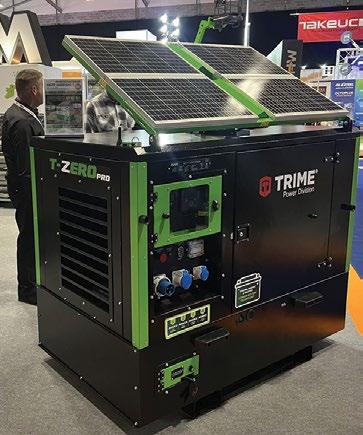

The new Quasar Flooded range will be available in 6, 8 and 12 Volt options for a wide range of applications including aerial work platforms and are suitable for extreme temperature variations. Eternity Technologies has operations in the United Arab Emirates, Germany, Spain, USA, Chile and South Africa and claims to be one of the fastest growing industrial battery companies. ■













